Kristina Seleshanko's Blog, page 81
January 3, 2014
Letter of the Week: L
 After reviewing the letters your child knows so far, get out some Legos and show your child how to make the letter L with them. Then have a little fun: Make some Lego prints, like these or these.
After reviewing the letters your child knows so far, get out some Legos and show your child how to make the letter L with them. Then have a little fun: Make some Lego prints, like these or these.Now is also a great time to show your child how to turn letters into words. You shouldn't expect your child to be able to spell yet, but you can pique her excitement about letters and reading by showing her a few simple words made with letters she already knows. For fun, make the letters with building blocks or Legos. This should be pure fun, so if your child isn't interested or grows tired of the activity, move on to something else.
For more about Letter of the Week activities, click here. For more Letter L crafts, activities, and videos, see below.
* L is for Lion (uppercase)
* L is for Lion (uppercase 2)
* L is for Lion (lowercase)
* Lion printable craft
* Lion hand print craft
* Lion hand print craft (2)
* Lion paper plate craft
* Lion paper plate mask craft
* Lion snack
* L is for Ladybug
* L is for Ladybug (2)
* L is for Ladybug (3)
* Ladybug snack
* Ladybug life cycle craft
* Ladybug paper plate craft
* Ladybug lacing activity
* Ladybug foot print craft
* L is for Lacing
* Lobster hand and foot print craft
* Lobster snack
* Lobster paper bag puppet craft
* L is for Lighthouse
* Lightening craft
* Lightening bug Band-aid craft
* L is for Love
* L is for Llama
* L is for Ladder
* L is for Ladder (2)
* L is for Lollipop free printable unit
* Lollipop craft
* Lollipop paper plate craft
* Apple Lollipop snack
* L is for Lamp
* L is for Lights
* Little Lights craft (perfect to go with the song "This Little Light of Mine")
* Jesus is the Light craft
* L is for Leaves
* L is for Leaves (2)
* L is for Leaves (3)
* L is for Leaves (4)
* Leaf craft
* Leaf rubbing craft
* L is for Lizard
* Lamb hand print craft
* Little Lamb (and Good Shepherd) craft
* Lamb paper plate mask craft
* L is for Lemons
* Lemonade recipe
* Exploring Lemons (and Limes) activity
* Lock activity
* Lava Lamp experiment
* Laundry craft (the photo is from a quiet book, but this could easily be made with paper)
* Phonics: Letter L
* Sesame Street: Letter L
* Sesame Street: La, la, la, la, letter L
* Sesame Street: The Sound of Letter L
* Sesame Street: L is for...
* Sesame Street: L Words in Space
* Sesame Street: If You've Lost Your Letter L
* Sesame Street: L is for Laugh
* Sesame Street: Spokesman for Letter L
* Sesame Street: L is for Lion
Published on January 03, 2014 07:00
January 1, 2014
How to Live on Almost Nothing and Have Plenty - a Book Review
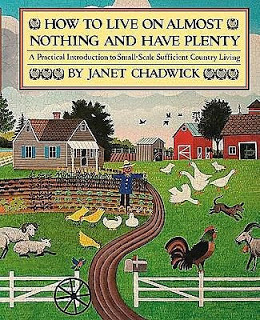 There are a lot of homesteading and self-sufficiency books available these days, but in my experience, only a few are really worth reading. How to Live on Almost Nothing and Have Plenty by Janet Chadwick is certainly one of them.
There are a lot of homesteading and self-sufficiency books available these days, but in my experience, only a few are really worth reading. How to Live on Almost Nothing and Have Plenty by Janet Chadwick is certainly one of them.What makes Chadwick's book unique isn't so much it's scope (it covers the typical homesteading topics, from gardening to caring for animals), but the fact that she's been living a mostly self-sufficient homesteading lifestyle for some time now. The most valuable parts of her book, then, are the wisdom and (often amusing) anecdotes she passes down to the reader.
The book begins with a little information about how and why Chadwick and her family chose to homestead, then proceeds to give some great advice about what to do in your homestead's first year. The supposition is that you aren't in an urban area, but that you have at least some land. Chadwick even gives a basic idea of how much you can expect to spend doing basic homesteading activities, like gardening and caring for animals.
Other chapters teach you how to start seedlings (conventionally, indoors); plant, care for, and harvest vegetables; grow fruit; keep bees (offering one of the more realistic guides I've seen, by the way); raise goats, hogs, rabbits, poultry (chicken, ducks, geese, and a wee bit on turkeys, which the author has never raised), and a veal calf. (The author argues that a small, self-sufficient homestead can't support a milk or meat cow through grazing or the growing of grain.) Throughout, I discovered advice I'd never heard or read before, even though I read a lot of gardening and homesteading books.
Ever practical, Chadwick explains why dairy and beef cattle aren't practical for a small, self-sufficient homestead. (You can't grow enough food for them, so you'd have to bring in feed - which makes cattle raising not self sufficient.) She explains how to choose the best animals for your homestead, and all the information you need to house and care for their basic needs. The last two chapters are mostly recipes - recipes you probably won't find in a cookbook. For example, you'll learn how to cook an old hen, make headcheese, render lard, and cook a rabbit or a goat. You'll also find recipes for making basic soap, cheese, candles, and such. In addition, Chadwick gives readers the basics on how to make an indoor seed starting center (that looks something like a bookshelf, plus grow lights), a simple smokehouse, homemade dehydrator, cheese press, and many housing requirements for homestead animals.
My only real complaint about this book is the title, which I find a little misleading. Sure, the author shows readers how to raise or grow almost all of their food, but that is only part of living. The title implies Chadwick might also discuss things such as affording the land for a homestead, clothing the family inexpensively, and energy. But she does not.
Nonetheless, Chadwick packs an amazing amount of information into a 271 page book. More even than T he Backyard Homestead (another guide I highly recommend, but which lacks personal anecdotes and advice). For anyone striving toward the homestead life, How to Live on Almost Nothing and Have Plenty is a must read.
Published on January 01, 2014 07:00
December 30, 2013
Getting More from This Year's Garden
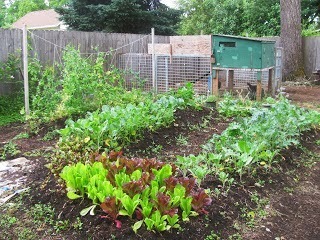 Did you know you can begin sowing seeds as early as late December? I rarely mention it until after Christmas because few of us have time to sow seeds in the midst of Advent and Christmas - but getting going on your garden NOW will make your garden all that much more productive. And no, it doesn't matter if you have huge snow drifts in your yard.
Did you know you can begin sowing seeds as early as late December? I rarely mention it until after Christmas because few of us have time to sow seeds in the midst of Advent and Christmas - but getting going on your garden NOW will make your garden all that much more productive. And no, it doesn't matter if you have huge snow drifts in your yard.So if you want to get the most from your garden this year, please check out these archived posts. They will teach you how to sow seeds earlier than you ever imagined, and how to get growing as soon as possible in 2014, and how to solve some problems you may have had with last year's garden.
* How to Winter Sow (aka, get your seeds started even if it's snowing!) You can also learn how to winter sow, start seeds indoors, and start seeds directly in your garden soil in my Starting Seeds ebook. It's free in .PDF format, or you can buy it in Kindle format for only 99 cents.
* Total Beginner's Guide to Growing Vegetables.
* All about types of seeds - including heirloom, hybrid, and GMO.
* How to Plan a Small Vegetable Garden. Planning makes a huge difference in garden productivity.
* Easiest Vegetables & Fruits to Grow. If you're a new gardener, it's usually wise to stick to the easier-to-grow stuff.
* How to Start Your Garden as Early as Possible - it's all about soil temperature and how to manipulate it.
* How Many Vegetables to Plant?
* Storing, Sorting, and Testing Seeds. Last year's seeds, that is.
* How I Choose my Garden Seeds. Sound advice on picking seeds that will grow well in YOUR garden.
* The Vegetable Garden: Location, Location, Location.
* Conserving Water in the Garden. For many of you, the high cost of tap water is a big concern; here are some ideas on using less water in the garden.
* Growing Your Own Kitchen Herbs. As you can see from my breakdown of money saved by growing my family's food, one of the easiest ways to save money at the grocery store is to grow your own herbs. And the best part is, you need very little space to have a productive herb garden!
* The #1 Biggest Mistaken When Growing Herbs. Herbs are very easy to grow, but here is a common mistake to avoid.
* The Organic, Pest Free Garden - Part I: Bugs.
* The Organic, Pest Free Garden - Part II: Critters.
* The World's Easiest, Safest, and Best DIY Weed Killers.
See all the Proverbs 31 Woman's gardening posts here.
Published on December 30, 2013 07:00
December 18, 2013
Merry Christmas!
 Friends, I've been sick for several days with a fever. Hubby has, too. And now the kids may be getting it. So, now that my Tylenol has kicked in this morning, I want to say Merry Christmas...I hope and pray that your family has a beautiful Christmas seeped in the true meaning of the season.
Friends, I've been sick for several days with a fever. Hubby has, too. And now the kids may be getting it. So, now that my Tylenol has kicked in this morning, I want to say Merry Christmas...I hope and pray that your family has a beautiful Christmas seeped in the true meaning of the season.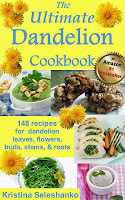
It wasn't quite my plan to take a Christmas break just yet, but as you can imagine, I have my hands full tending to my family and myself right now. So please enjoy the season and I will be back to blogging shorting after the 25th.
Oh, and as a little Christmas gift to you from me, right now you can pick up my popular Ultimate Dandelion Cookbook for free - just click here. Don't have a Kindle? No problem! Click here to learn how to read the book on your computer. To read it on your Nook, click here; or to read it on you iPad, click here.
Merry Christmas!
Published on December 18, 2013 09:16
December 16, 2013
How to Rotate Crops - the Easy Way! - for a More Productive Garden
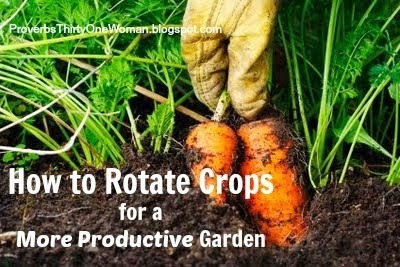 This summer, I discovered a beautiful - but strange - butternut squash in my garden (see below). After a little research, I learned the squash was diseased with gummy stem blight. The worst part was, the soil where the squash was growing was now contaminated and would spread the disease to any other squash planted there. How to overcome this? Crop rotation.
This summer, I discovered a beautiful - but strange - butternut squash in my garden (see below). After a little research, I learned the squash was diseased with gummy stem blight. The worst part was, the soil where the squash was growing was now contaminated and would spread the disease to any other squash planted there. How to overcome this? Crop rotation.Over the years, I've not always done the best job of rotating crops. Every article I read on the topic seemed so complicated, I was frankly overwhelmed by the thought of crop rotating. So I promise this article will show you easy ways to rotate your crops.
 This squash's pretty pattern comes from gummy stem blight.Why Crop Rotation is Key to Garden Health
This squash's pretty pattern comes from gummy stem blight.Why Crop Rotation is Key to Garden HealthCrop rotation is the answer to many a garden's ills. Crop rotation:
* Increases soil fertility
* Results in a more abundant harvest
* Helps prevent disease
* Helps reduce pest problems
In simple terms, certain plants use up specific nutrients in the soil and attract certain pests and diseases. By planting the same plant (or plants in the same family) in the same location every year, the soil becomes depleted of certain nutrients - and disease and pests think they've found heaven. At the very least, without crop rotation, your crop yields will decline. At worst, your garden will be plagued with pests, disease, and deformed produce.
Easy Ways to Rotate Crops
There are several ways to plan crop rotation.
1. Keep it simple and focus on not planting anything from the same plant family* in the same spot more than once every three years.
2. The first year, plant something that puts nitrogen into the soil (like beans). The second year, plant something that sucks up a lot of nitrogen (like greens). The third year, plant something mostly neutral (like herbs). Repeat.
3. Eliot Coleman, author of The Winter Harvest Handbook and The Four Season Harvest , among other gardening books, has done extensive research on this and other vegetable gardening topics. He recommends rotating your crops this way: Year 1: tomatoes; year 2: peas; year 3: cabbage; year 4: sweet corn; year 5: potatoes; year 6: squash; year 7: root crops; year 8: beans. If you don't grow one or more of these plants, however, you can simply substitute something from the same family.* For example, let's say you don't grow tomatoes. (What are you, crazy??? But I actually do know a few folks who don't like them.) Substitute potatoes, peppers, or eggplant instead.
Of course, all this means you need to keep track of what you plant, and where. A quick sketch is all that's needed. Keep it someplace safe, like a gardening notebook, a household planner, or tacked on the garden shed wall.
Taking just a few minutes to do this each year will save you a lot of time, effort, money, and disappointment in years to come. Trust me!
* To learn more about plant families, visit Garden Organic.
Related Articles:
How to Plan a Small Vegetable Garden
The World's Easiest, Safest, and Best DIY Weed Killers
How to Turn a Toilet Paper Roll into a Seed Pot
How to Start Your Garden as Early as Possible
How to Winter Sow Vegetables and Ornamental Plants
Published on December 16, 2013 07:00
December 13, 2013
Letter of the Week: K
 This week, begin by showing your child the letter K and tell him what sound it makes. Brainstorm words that have the "k" sound (don't worry if your child also suggests some "c" words that start with the same sound). Be sure "kangaroo" is one of the words mentioned. Then play the Kangaroo K Scavenger Game, putting items that have the "k" sound in a fun little kangaroo pocket. Later in the week, play the K is for Kick Game, where your child will name words that start with the "k" sound and be rewarded with a fun kick to a milk jug.
This week, begin by showing your child the letter K and tell him what sound it makes. Brainstorm words that have the "k" sound (don't worry if your child also suggests some "c" words that start with the same sound). Be sure "kangaroo" is one of the words mentioned. Then play the Kangaroo K Scavenger Game, putting items that have the "k" sound in a fun little kangaroo pocket. Later in the week, play the K is for Kick Game, where your child will name words that start with the "k" sound and be rewarded with a fun kick to a milk jug.For more about Letter of the Week activities, click here.
* K is for King printable craft (and this similar craft; see also)
* King's crown craft
* K is for Kite
* K is for Kite (2)
* Kite handprint craft
* Kite craft
* Kite counting craft
* Kite "stained glass" craft
* Lots of K is for Kite activities, including a "roll a kite" game, kite counting, kite size sort, and more
* K is for Karate
* K is for Kernels
* K is for Kisses
* K is for Kiwi snack (use a cookie cutter)
* Kiwi paper plate craft
* K is for Keys
* K is for Keys (2)
* Counting Keys
* Masking tape letter K (works for any letter)
* K is for Koala
* Koala footprint craft
* Koala mask craft
* Koala puppet craft
* K is for Keyboard
* K is for Kangaroo
* Kangaroo craft
* Kangaroo printable craft
* Kebobs fruit snack
* Phonics: The Letter K
* Sesame Street: Letter K
* Sesame Street: K is for Kangaroo
* Sesame Street: K is for Karate
* Sesame Street: K is for Key
* Sesame Street: Kermit and the Magic Finger K
Published on December 13, 2013 07:00
December 11, 2013
How Much Money Can You Save Gardening and Homesteading?
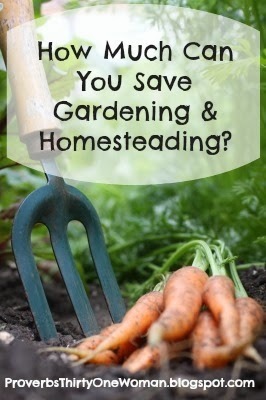 Have you ever wondered if you're saving money by growing your own food? While saving money isn't the only reason for gardening and homesteading, I still like to keep track of expenses. A great many people are under the impression that gardening and homesteading cost more than buying food at the grocery store. And while I've proven before that both chicken keeping and vegetable gardening are frugal, I haven't checked costs in a few years. So this year, I kept a careful record of the food we produced.
Have you ever wondered if you're saving money by growing your own food? While saving money isn't the only reason for gardening and homesteading, I still like to keep track of expenses. A great many people are under the impression that gardening and homesteading cost more than buying food at the grocery store. And while I've proven before that both chicken keeping and vegetable gardening are frugal, I haven't checked costs in a few years. So this year, I kept a careful record of the food we produced. But before you read on, you should know:
* My estimates are conservative. Quite conservative. Although the food we produce is organic and ultra-fresh, whenever possible, I compared the cost of our produce with prices at our local chain grocery store. Yes, it would be more accurate to compare what we produce with farm fresh, organic produce (or even grocery store organic produce), but frankly, we can't afford to buy organic. But if I did use farm fresh organic or grocery store organic with what we produce, this would greatly increase the value of our home grown food.
* When I couldn't find a particular food locally, I looked for a price online - always trying to choose the lowest price I could find. I did not include the cost of shipping I would have to pay if I chose to buy these items online.
* My garden is small: The main bed is 12 x 14 ft. with wide pathways; I also have a bed about 33 x 3 ft.) (To see how I laid out the garden this year, click here.)
* My garden is still producing! I still have carrots, parsnips, collards, kale, Jerusalem artichokes, in the ground. And, of course, the chickens are still laying eggs. I used totals from December 8, 2013 for my calculations.
* I didn't harvest as much of certain things (like herbs) as I could have, simply because I couldn't use as much as I grew.
* I had to exclude the value of certain items that I can't buy locally and couldn't find online.
2013 TOTALS:
Total Pounds of Food Produced: 538.12 lbs.
Total Estimated Cost of Purchasing that Food: $1,770.89
Total Cost of Producing our Food: $278.00
Money Saved: $1,492.89
BREAKDOWN OF COSTS:
Seeds: $75
Seed starting containers: free
Seed starting soil: $10
Fertilizer: $10
Compost: free
Water: $80
Chicks: $9
Chicken Bedding: $10
Chicken Feed: $84
BREAKDOWN OF PRODUCE:
Eggs, 815 = $163Chicken meat, 20 ½ lbs. = $40.79
Apples, 13 1/4 lbs. = $25.00Basil, 3/4 lb. = $7.44Beets, 1 lb. = $2.49Blackberries, 3 lbs. = $15.84Blueberries, 7 1/2 lb. = $79.20Buttercup squash, 2 1/2 lbs. = $2.22 (I can't find this type of squash locally, so I used the average price for summer squash)Butternut squash, 44 1/2 lbs. = $39.60Cabbage, 6 lb. = $2.94Calendula flowers, 8 lb. = $48.00 (online price)Carrots, 4 1/2 lb. = $8.37Chives, 6 1/2 lbs. = $64.48Cilantro, 1 1/8 lb. = $4.74Collards, 14 1/2 lbs. = $144.42Dandelion flowers, ½ lb. (I could not find these locally or online)Dandelion greens, 35 lb. = $52.15 (online price of fresh leaves)Dandelion Root, 2 1/8 lb. = $17.50 (online price)Garlic, ½ lb. scapes + 1 lb. heads = $3.00 scapes (online price listed by local farmers);$3.49 headsGreen onions, 1 lb. = $2.36Ground nuts, 1 lb. = $50.00 (online price)Kale, 17 lbs. = $169.32Kohlrabi, 1 lb. (I couldn't find a local or online price)Kiwi, 1 lb. = $3.99 (for common kiwi, not the Arctic kiwi I grow)Leeks, 5 lbs. = $25.00Lettuce, 11 lb. = $36.19Mint, 3/4 lb. = $7.44Oregano, 1 1/2 lb. = $14.88Pattypan squash, 44 lbs. = $39.16 (I couldn't find these locally or online, so I used the average price for summer squash)Parsnips, 2 lbs. = $1.99Passion vine, 1 lb. = $6.00 (online price)Peas, 5 1/2 lbs. = $13.69Potatoes, 11 1/4 lbs. = $11.14Radishes, 8 lb. = $9.44Rosemary, 1/2 lb. = $4.96Sage, 1 1/2 lb. = $14.88Spinach, 1 1/4 lb. = $1.98Squash blossoms, 3 1/2 lbs. (I couldn't find these locally or online)Sunchokes, 40 lbs. = $360.00 (online price)Strawberry, 3 1/2 lbs. = $12.32Tomato, 38 3/4 lbs. + 28.25 lbs. green = $96.49 red, $70.34 greenWild onion, 2 lb. (I couldn't find these locally or online)Wonderberries, 1 lb. = $16.60 (I couldn't find these locally or online, so I compared them to the online price of huckleberries - a close relative)Zucchini, 60 1/2 lbs. = $78.05
Published on December 11, 2013 07:00
December 9, 2013
Operation Underground Railroad
 There are more slaves alive today than at any other time in history. Nearly 2 million of them are children and about 8,000 American children are sold into slavery each year. But these children aren't being worked to death. Even the littlest amongst them are sex slaves. But here's the real kicker:
Experts know where many of these children are - they just don't have the funds to rescue them.
There are more slaves alive today than at any other time in history. Nearly 2 million of them are children and about 8,000 American children are sold into slavery each year. But these children aren't being worked to death. Even the littlest amongst them are sex slaves. But here's the real kicker:
Experts know where many of these children are - they just don't have the funds to rescue them.
Until recently. Operation Underground Railroad, powered by former FBI agents, CIA agents, Navy SEALs, and Green Berets, has made it their mission to rescue as many of these children as possible. “We know how to extract them. This is what we do,” their website states. “We rescue them and place them into safe havens where they can be rehabilitated. Then we go after the bad guys and break their organizations. Help us do this. Help us help the children.”
And Operation Underground Railroad moves fast. Recently, when the charity was mentioned on The Glenn Beck Program, they raised $300,000 in a single day and immediately deployed two rescue teams. One of the rescued children, kidnapped during Sunday School, was immedietly returned to his father.
There are a number of good organizations that fight human trafficking (my friend and fellow blogger Tanya Dennis' Justice Network is one regional organization worth joining), but what makes Operation Underground Railroad stand out from the rest is that they are focused on getting children out of sexual slavery and either restoring them to their families or finding them new a new family. In addition, they go after the bad guys, to make sure they don't hurt more children.
Please consider making a tax-free donation this Christmas season. You can also report tips on their website.

Published on December 09, 2013 07:00
December 6, 2013
Letter of the Week: J
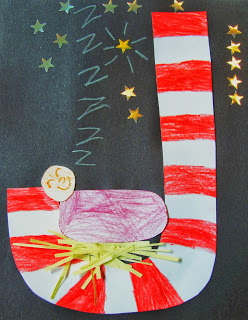
This week, help your little one get out her wiggles by beginning the day with J is for Jump! This can be as simple as placing letter Js on the ground (if it's warm enough, use chalk on the sidewalk; if you need to do this indoors, just print out some letters on paper and place them on the floor). Or you can use this activity to review the letters A - J: Shout out a letter and have your child jump on it!
For more about Letter of the Week activities, click here.
* J is for Jewel
* Jewel crown craft (more simple version here)
* J is for Jug
* J is for Juice
* J is for Jellyfish
* J is for Jellyfish (2)
* J is for Jellyfish (lowercase; you could also make the jellyfish part from a handprint)
* Jellyfish paperbag craft
* Jellyfish coffee filter craft
* Jellyfish paper plate craft
* J is for Jungle
* Jungle animal mask craft
* Jungle animal mask printables
* J is for Jaguar
* J is for Jaguar (2)
* Jaguar handprint craft
* J is for Jelly Jar
* Jack in the box craft
* J is for Jacket
* Jupiter craft
* J is for Jellybean
* Jellybean counting
* J is for Jesus
* Lots of J is for Jesus activities, including a simple puzzle, size sort, patterns, scavenger hunt, and more
* J is for Joseph
* J is for Jello snack
* J is for Jelly on toast snack
* Phonics: Letter J
* Sesame Street: Letter J
* Sesame Street: My J Won't Jump
* Sesame Street: The J Song
* Sesame Street: The J Train
* Sesame Street: The J Jacket Song
* Sesame Street: J Moon
Published on December 06, 2013 07:00
December 4, 2013
Best FREE Canning Jar Labels on the Net
 Home canned foods and gifts in a jar both make excellent Christmas gifts. Not only are they yummy (or, in the case of some gifts in a jar, useful), but they say "You cared enough to take the time and creativity to make this for me." In years past, I've discussed some fun ways to dress up your jarred gifts, but this year I specifically wanted to focus on labels. There are a ton of free jar labels available online - just print them off, cut them out, and attach. But to help you wade through all those offerings, I've rounded up what I consider the very best the Internet has to offer.
Home canned foods and gifts in a jar both make excellent Christmas gifts. Not only are they yummy (or, in the case of some gifts in a jar, useful), but they say "You cared enough to take the time and creativity to make this for me." In years past, I've discussed some fun ways to dress up your jarred gifts, but this year I specifically wanted to focus on labels. There are a ton of free jar labels available online - just print them off, cut them out, and attach. But to help you wade through all those offerings, I've rounded up what I consider the very best the Internet has to offer.
Canning Jar Top Labels
These are the type of labels designed to fit on the lid of canning jar. You may either glue these labels on top of the lid or simply set them on top of the jar lid and hold them in place with a jar screwband.
* Beautiful, old fashioned labels for blueberry, peach, apricot, grape, cherry, raspberry, strawberry,
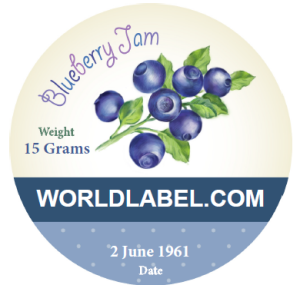 Old fashioned labels from World Label.bumbleberry (mixed berry), and marmalade.
Old fashioned labels from World Label.bumbleberry (mixed berry), and marmalade.* Simple "homemade" labels
* Colorful stripes
* Black and white Art Deco inspired
* Candy stripes
* Simple "Homemade Just for You"
* Green and blue stripes
* Flower power
* Several styles of vintage labels
* Classy chalkboard style
* Plaid, polka-dotted, and starburst labels
* Pretty fruit labels for berry, cherry, raspberry, and strawberry jam
* Citrus
* Antique-style
* "Spread Love" labels and tags
* Apples
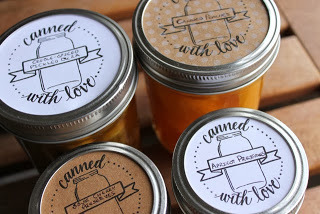 Mason jar labels from ladyfaceblog.blogspot.com* Blue, maroon, gold, and green print
Mason jar labels from ladyfaceblog.blogspot.com* Blue, maroon, gold, and green print * Cute fruit labels
* Colorful polka-dots and stripes
* Christmas trees
* Red and white "Jam Made with Love By..."
* Beautiful fruits: cherry, peaches, lemons, tomato, pear, grapes, pumpkin, strawberry, currents, raspberry, and blackberry.
* Photos of real food: apple, tomato, cucumber
* Sunbursts
* Simple "Made With Love"
* "Farm Fresh"
* Red, blue, and green gingham
* Snazzy black, white, and color labels
* Flowery black and white
* Colorful leaves
* Green leaves and grass
* Mason jars
* Old fashioned strawberry jam
 Christmas presents and penguins from World Label.* Applesauce
Christmas presents and penguins from World Label.* Applesauce* Pretty vintage
* Red and white striped, snowflakes, and holly labels
* Christmas lights
* Christmas presents and penguins
Canning Jar Front Labels
These labels are designed to glue on the front of a jar - just like labels on grocery-store purchased canned goods. For best results, print on paper with a sticky back.
* Sweet cherry jar labels
* Cute blue and red "Made with Love"
* Red gingham
 Old fashioned strawberries from Happy Miscellany.
Old fashioned strawberries from Happy Miscellany.* Colorful polka-dots and stripes
* "The Jam Labelizer:" choose from several fonts and colors
* Christmas and winter theme labels
* Apple pie
* Old fashioned strawberries
* Fruity labels
* Vintage
* Red and white striped, snowflakes, and holly labels
* Elaborate antique
* Modern blue and gold
Canning Jar Tags
These tags tie on with string or ribbon.
* Cute "What's Inside" tags
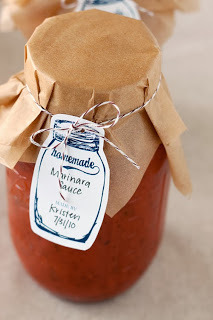 Mason jar tags from Cottage Industrialist.
Mason jar tags from Cottage Industrialist.* Mason jar tags
* Rustic tags for strawberry, peach, cherry, plum, blueberry, raspberry, mixed berry, damson, and blackberry jams (also orange marmalade)
* Patterned mason jars
* "Spread the Love"
* Cute strawberries
* "Homemade Salsa"
* "Farm Fresh"
* Christmasy birds
* Merry Christmas
Other Ideas
* Use old Christmas cards to create jar labels.
* Use muffin liners as decorative toppers. Or use brown kraft paper. Tie with string, or just put a jar ring on.
Published on December 04, 2013 07:00



